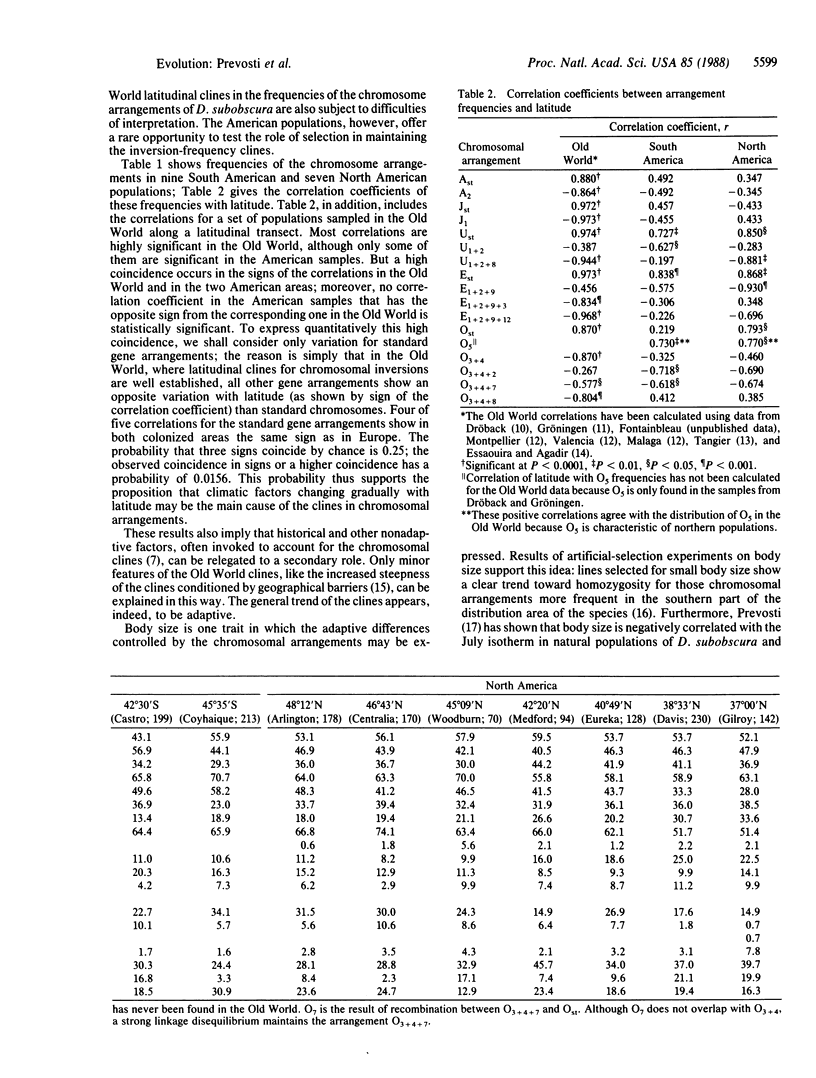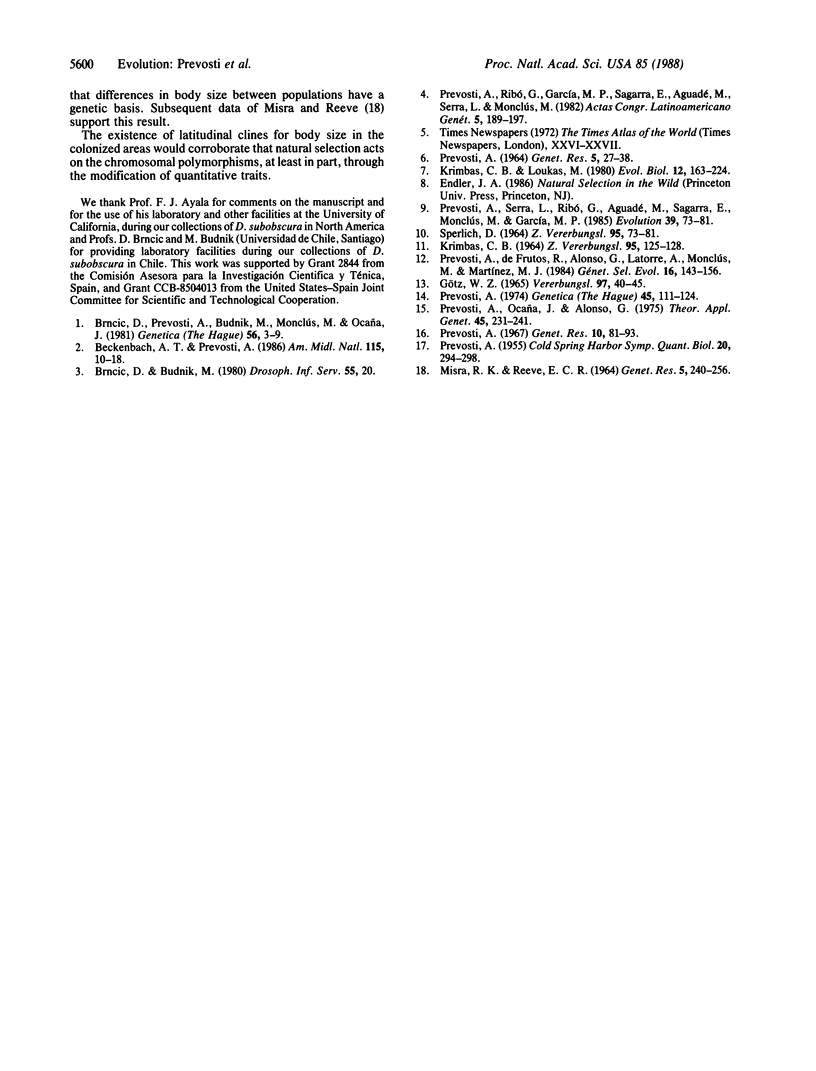Abstract
North America and South America have recently been colonized by the Palearctic species Drosophila subobscura. This double colonization offers a rare opportunity for evolutionary studies. Correlations between chromosomal arrangement frequencies and latitude were calculated for the colonizing populations. Signs of these correlations are highly coincident with those found in the Old World. These results provide experimental support for the adaptive value of the chromosomal-inversion polymorphism; historical and other nonadaptive explanations are thus excluded or relegated to a secondary role.
Keywords: evolution, natural selection, adaptation, clines
Full text
PDF



Selected References
These references are in PubMed. This may not be the complete list of references from this article.
- Götz W. Chromosomaler Polymorphismus in einem Muster von Drosophila subobscura aus Marokko, mit Darstellung der Heterozygotieverhältnisse als Heterozygotiediagramm. Z Vererbungsl. 1965;97(1):40–45. [PubMed] [Google Scholar]
- KRIMBAS C. B. THE GENETICS OF DROSOPHILA SUBOBSCURA POPULATIONS. II. INVERSION POLYMORPHISM IN A POPULATION FROM HOLLAND. Z Vererbungsl. 1964 Aug 14;95:125–128. [PubMed] [Google Scholar]
- PREVOSTI A. Geographical variability in quantitative traits in populations of Drosophila subobscura. Cold Spring Harb Symp Quant Biol. 1955;20:294–299. doi: 10.1101/sqb.1955.020.01.028. [DOI] [PubMed] [Google Scholar]
- Prevosti A. Inversion heterozygosity and selection for wing length in Drosophila subobscura. Genet Res. 1967 Aug;10(1):81–93. doi: 10.1017/s0016672300010788. [DOI] [PubMed] [Google Scholar]
- SPERLICH D. CHROMOSOMALE STRUKTURANALYSE UND FERTILITAETSPRUEFUNG AN EINER MARGINALPOPULATION VON DROSOPHILA SUBOBSCURA. Z Vererbungsl. 1964 Apr 10;95:73–81. [PubMed] [Google Scholar]


